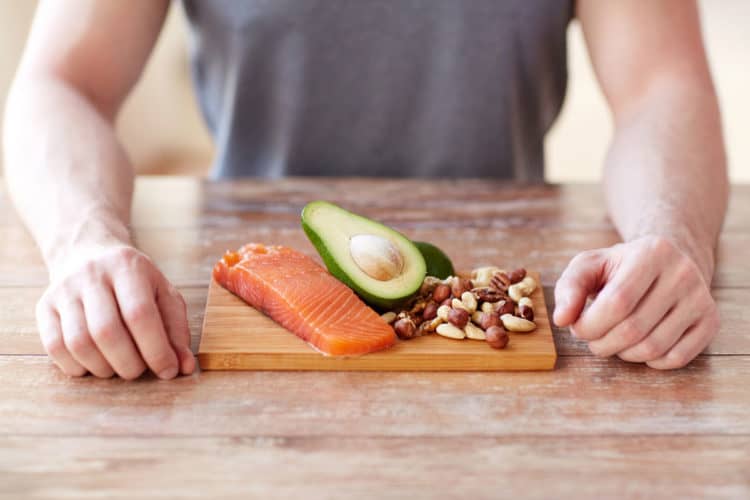The Paleo diet is intended to be similar to what our ancestors and forefathers ate thousands of years in the past. When you start a paleo diet you can be assured you are eating like your ancestors, even if you don’t know exactly who they are. Although it is hard to know exactly what our predecessors ate in various regions of the world, scholars assume their diets were mostly up of complete foods.
The hunter-gatherers apparently had a considerably lower incidence of lifestyle illnesses such as obesity, and heart diseases because they followed a whole-food-based diet and lived physically active lifestyles. As a matter of fact, multiple studies demonstrate that this diet can result in considerable weight loss (without calorie tracking) and significant health advantages.
We provide you with a basic introduction to the paleo diet, including a meal plan and other important information.
The Paleo Diet Meal Plan
There is no one “correct” way to eat for everyone, and Paleolithic humans thrived on a range of diets based on what was available at the time and where they lived around the globe.
Some ate a low-carb diet rich in animal foods, whereas others ate a high-carb diet rich in plant foods.
Consider this a basic suggestion rather than a rule of thumb. All of this may be tailored to your own requirements and tastes.
Here are the fundamentals:
What To Focus On Eating:
Fish, eggs, vegetables, fruits, nuts, seeds, spices, healthy fats, and oils are all good sources of protein.
What To Avoid Eating:
Sugar, soft drinks, most dairy products, legumes, artificial sweeteners, margarine, and trans fats are all examples of unhealthy foods.
The Upgraded Paleo Diet
The Paleo community has changed dramatically in recent years. Nowadays when you start a paleo diet the foods come in a variety of flavors and combinations. Many of them permit the use of modern foods that research shows are healthful.
These include grass-fed butter and gluten-free cereals such as rice.
Many individuals now consider paleo to be a template to build your diet on, rather than a rigorous set of guidelines that must be followed.
Choosing Your Style of Paleo Eating
Strict
These Paleo supporters stick to the rules, claiming that if Paleolithic man wouldn’t consume it, so should contemporary humans. They will not eat grains of any sort, processed sugar of any kind, or dairy products. Instead, they will seek out grass-fed meats and organic fruits and vegetables, eat wild game, and strictly adhere to the program.
Loose
Other Paleo followers take a more relaxed approach, recognizing that eating completely like a caveman is not possible in our contemporary environment, and they incorporate certain modern conveniences into their Paleo strategy. They might eat dairy every now and then, or they might be fine with pseudo-grains, or they might even eat a non-paleo meal every now and then.
In the Middle
Of course, there are a lot of Paleo followers that fall somewhere between stringent and lax, accounting for the vast majority of folks who claim to be following Paleo. Whatever path you choose, the Paleo diet will work for you because even if you merely follow its fundamental concepts, you’ll be eating much better food and eliminating a lot of trash that surrounds you on a daily basis.
What You Should Expect On Your Paleo Diet
The first month on Paleo might be the most difficult, especially for people who have previously eaten a diet that differs greatly from the Paleo diet. Getting rid of sugar can be difficult for individuals who have consumed a diet high in the sweet stuff, and getting rid of bread and other grain-based meals can also be difficult.
After the first month, it’s usually easy sailing for the rest of the time. The diet kicks in, you start losing pounds till you reach your naturally healthy weight, you have more energy than you imagined you could have, and you do not have food cravings or food comas after meals. This is where the magic happens, and where all of the Paleo believers get their faith.
Make it your aim to complete the second month of Paleo and beyond in order to get the best effects from your efforts.
Pros & Cons of Going Paleo
When you start a Paleo Diet, like any other diet, it has its own set of advantages and disadvantages, as well as its own share of debate as it gains popularity. To evaluate if the Paleo Diet is a suitable fit for you, examine these factors in connection to your lifestyle and objectives, just as you would with any other diet.
The Pros
- There will be no calorie counting or portion restriction
- Soluble fiber, antioxidant vitamins, phytochemicals, omega-3 fatty acids, monounsaturated fat, and low-glycemic carbs are abundant in this diet.
- Paleo is an eating strategy that is free of preservatives, additives, and artificial components.
- Aside from natural sugars in fruits and vegetables, gluten is naturally gluten-free and mainly sugar-free.
There are several anti-inflammatory advantages of eliminating gluten and boosting plant-based meals. - Most people lose weight and retain a trim physique.
- Because of the rise in red meat and dark leafy greens, most individuals are consuming more iron.
- People report feeling more full, which is most likely owing to higher fat and protein consumption.
- Many people report having more energy and simply “feeling better”.
The Cons:
- The diet is deficient in calcium, vitamin D, and other elements found in dairy and whole grains.
- Fat consumption usually rises, especially when meat replaces vegetables and fruits as the mainstay of the diet.
- Because the diet does not include entire grains or legumes, it can be particularly challenging for vegetarians.
- There is currently a paucity of evidence on how healthy the diet is and much debate on whether it is good to exclude all entire grains and dairy.
- It can also be very expensive and costly due to the high cost of vegetables, meats, seafood, and nuts in general.
Final Thoughts
The paleo diet is based on the food that hunter-gatherers were likely to follow. While there is no single way to follow a paleo diet, the main principle is to eliminate processed meals in favor of nutritious, natural foods.
Meat, fish, eggs, seeds, fruits, nuts, and vegetables, as well as healthy fats and oils, are all Paleo-friendly foods. Stay away from processed meals, wheat, and sugar once you start a paleo diet so you can observe the positive effects as soon as possible.
You may also base your diet on paleo meals while incorporating a few current healthy items such as grass-fed butter and gluten-free cereals.
Tags: Diet, food, nutrition, paleo, paleo diet











